King Henry V is generally reckoned to have been a
‘Good King’, best remembered for winning the Battle of Agincourt and for
getting some of Shakespeare’s best lines –
‘Once more unto the breach, dear friends, once more’,‘Cry God for Harry, England and Saint George’,‘We few, we happy few, we band of brothers’,
and all that. Henry’s son, also called
Henry, became King Henry VI. He should have been a ‘Good King’ too, because he
was a kindly, pious man, but throughout his life he was dogged by periods of
mental instability.
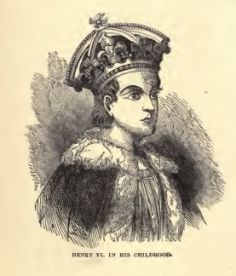 |
| The boy King Henry VI |
He became King of England when he was only nine months old,
making him the youngest-ever English monarch to succeed to the throne, and
during his childhood his father’s brothers, John and Humphrey, acted as regents
on his behalf. In 1437, when Henry was sixteen years old, he took power in his
own right, although his court was dominated by favourites. Henry was the
great-grandson of King Edward III, and another of Edward’s great-grandsons,
Richard, 1st Duke of York, was named as Henry’s heir presumptive,
although York was sent to govern Ireland and excluded from life at Henry’s
court. In 1445, Henry married the fifteen-year-old Margaret of Anjou, a
political match intended bring a peaceful conclusion to the Hundred Years War
between England and France, and in 1453 their only son, Edward, was born.
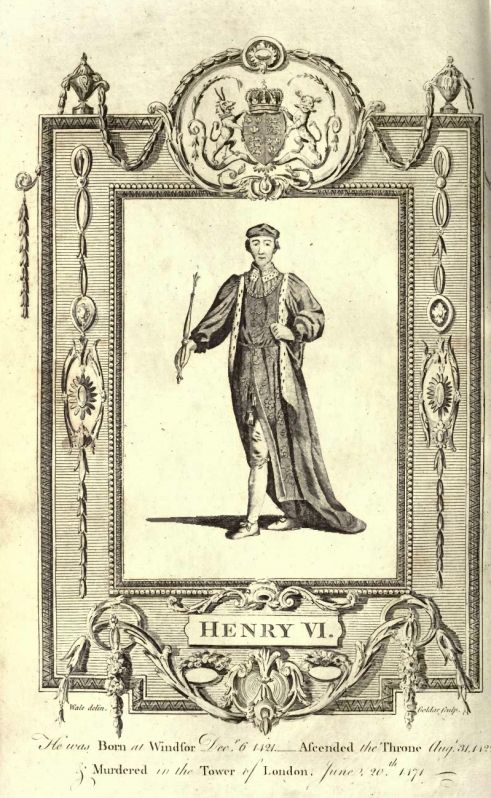 |
| King Henry VI |
Two
of Henry’s favourites, the Dukes of Somerset and Suffolk, caused particular
unrest in the country and the reputation of the monarchy was greatly
diminished; Suffolk was very unpopular and a Commons campaign against him
forced Henry to send him into exile, although his ship was intercepted in the
English Channel and Suffolk’s murdered body was washed ashore at Dover.
Somerset mishandled the military campaign in Normandy and lost all the land
gains made by Henry V, leaving Calais as the only English territory on the
continent.
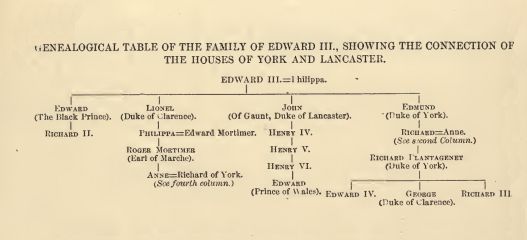 |
| The Houses of Lancaster and York |
In 1452, Richard, Duke of York, returned from Ireland with the
intention of putting an end to the corruption in Henry’s court and after
setbacks, he was named regent and Protector of the Realm in 1454, when a bout
of Henry’s insanity had rendered him unable to rule. York gained a powerful
ally in Richard Neville, Earl of Warwick, and when Henry regained his sanity
late in 1454, Warwick and other disaffected nobles backed the House of York’s
claim to the throne.
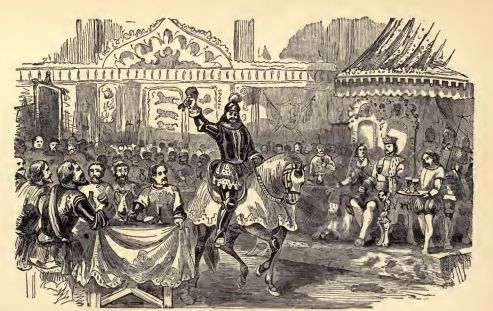 |
| Richard of York giving Battle in Vain |
Thus began the War of the Roses, with the first action,
the First Battle of St Albans, resulting in victory for Richard of York, who
captured Henry VI and committed him to the Tower of London, together with the
deaths of some of the leading Lancastrian nobles. I won’t go into the details
of the War of the Roses just now, but York never became King, although he was
named as Henry VI’s successor, in spite of being older than him. Richard
married Cecily Neville and they had eight children, and their eldest surviving
son, Edward, was declared King Edward IV soon after his father had been killed
at the Battle of Wakefield in 1460.
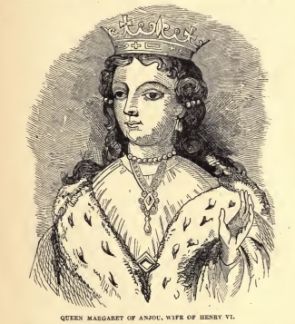 |
| Margaret of Anjou |
Margaret of Anjou took refuge in Scotland
and planned to regain the throne for her husband and son, and when Edward IV
argued with Warwick and with his younger brother, George, Duke of Clarence,
Margaret allied herself with them, and after Warwick’s daughter, Anne, had been
married to her son, Edward of Westminster, Margaret backed Warwick’s campaign
against the Yorkists.
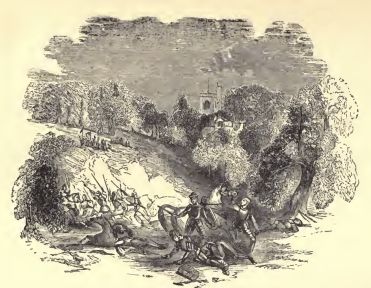 |
| Warwick killed at the Battle of Barnet |
In 1470, Edward VI was forced into exile and Henry VI was
returned to the throne, with Warwick and Clarence effectively ruling on his
behalf, as his insanity had relapsed. Queen Margaret and Anne remained
temporarily in exile in France and returned to England in 1471, only to learn
that Edward IV had been reconciled with his brother, Clarence, and that Warwick
had been killed at the Battle of Barnet. Margaret and her son, Edward, fought
against the Yorkists at Tewkesbury, where Edward was killed, the only heir
presumptive to die in battle. Henry VI was returned to the Tower of London and
Edward IV resumed his reign; Henry died in prison in 1471, some say of
melancholy when he heard of the death of his son, Edward, at Tewkesbury, others
say he was murdered on the orders of Edward IV, others yet think he was killed
by Edward’s brother, Richard.
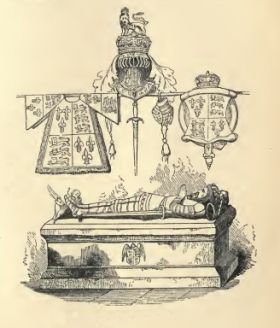 |
| The Tomb of Henry VI |
This Richard, then Duke of Gloucester, later
married Anne Neville (widow of the same Edward of Westminster), to whom he had
once been betrothed. When Edward IV died, this brother Richard committed
Edward’s sons, Edward and Richard, to the Tower of London (the Princes in the
Tower), usurped the throne and was declared King Richard III.
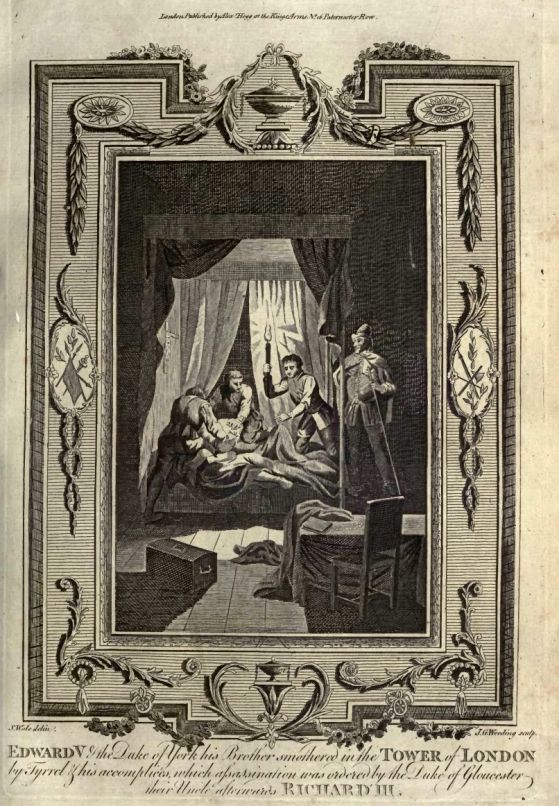 |
| Murder of the Princes in the Tower |
Now, if you’re
finding it difficult following all these assorted Henries, Richards and
Edwards, you’re probably not alone, so just for a bit of a break, I’ll take a
look at another of Richard of York’s sons already mentioned, thankfully called George.
No comments:
Post a Comment